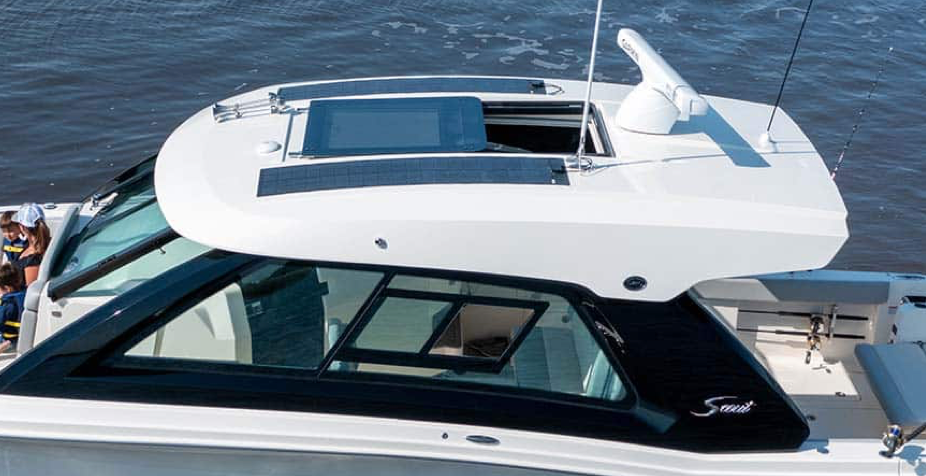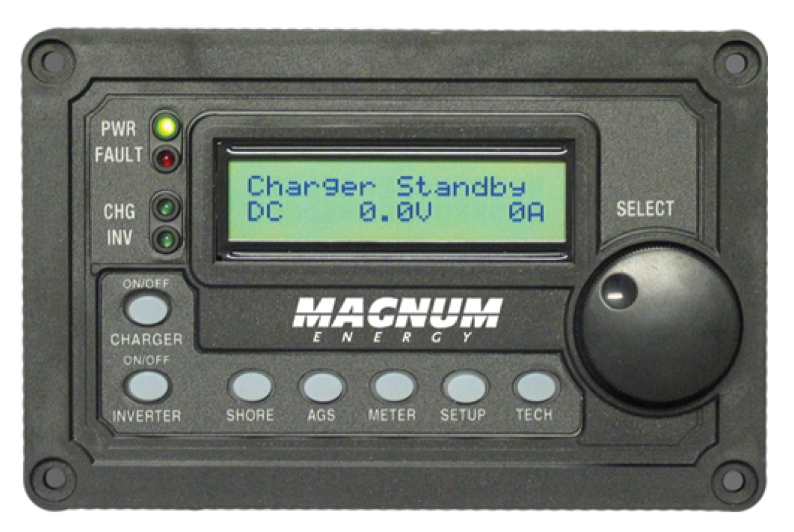Inverters for Safe, Dependable AC Power Onboard

Larger boats that require alternating power for everything from televisions to toasters need an inverter, a device that converts direct current (DC) power from a boat’s battery banks to alternating current (AC) power suitable to operate all the devices we depend on. (Generators can also provide AC power, of course, but do so at the expense of noise, vibration and exhaust fumes that are problematic in crowded anchorages.)
When AC power needs are smaller or you don't want an internal combustion engine going, inverters have a number of advantages. They are an economical, maintenance-free, and relatively compact source of AC power, and the inverter's solid state circuitry is quiet and non-intrusive.
Battery engineering is rapidly advancing to produce lighter and more compact batteries that can produce more power for longer periods, which makes the inverter system even more important. Even high-load equipment like air-conditioning can now be operated via battery power for limited periods on some boats like the new Scout 359 LXZ thanks to high-output lithium-ion batteries and inverters.

Choosing the right size inverter depends on many factors, but it's generally better to get one too big than "just right" or too small—electrical loads aboard tend to always trend upward. Choose a pure sine wave model, which will run all modern electronics safely and smoothly—a few older (and cheaper) modified sine wave models do not “alternate” the DC current smoothly, and can cause issues in some sensitive electrical equipment.
On boats designed for anything more than long weekends aboard, you’ll probably want both a generator and an inverter to meet the varying electrical needs.
Combined Charger/Inverters

Because inverters and battery chargers share certain electrical components, many models are available as combination inverter/charger units. Inverter/charger combinations include all the necessary electronics in a single box to charge your batteries and feed your AC devices.
Most automatically switch almost seamlessly to battery charger mode when plugged into shore power or if the generator is turned on, changing back into inverter mode when the AC power input is turned off. Most models have multi-stage chargers that prolong the life of your batteries by monitoring them and altering the charge rate according the battery's needs and condition.
Also, some inverter/chargers can be set to optimally charge specific banks. You can program them as to ambient temperature, battery temperature, bank size, battery type and other factors. This is a very desirable feature.
Inverter/chargers almost always include an automatic transfer switch, so that when the unit detects another source of AC power (because you plugged into shore power or started your genset) the inverter/charger shifts gears from inverting to charging batteries. If the outside source of AC goes away, it automatically switches back from battery charger to inverter.

Larger inverter/chargers not only have smart three-stage charging but can also supply very high DC charging output if needed by the batteries. This is important because, there is power lost when inverters change DC to AC, not merely in proportion to the DC generated, but also because of efficiency issues in the process.
The more AC power produced by the inverter, the greater the DC loss attributable to a low efficiency. Look for the efficiency rating when buying. If you have an inverter/charger that can supply high amperage, "intelligently" to your batteries when charging, you can turn off your generator earlier and go back to quiet power.
Choosing an Inverter
Before you can select the appropriate inverter, you must first analyze your power needs, including expected future additions. The key is to determine the maximum amount of 120 Volt AC power you and your crew will use at any one time, keeping in mind efficiency issues and the fact that the more you use the sooner you'll discharge the battery bank if you have no charging source, such as a generator or engine alternator, running.
Small inverters will operate one or two smaller appliances simultaneously. If you want to run the TV, VCR, and computer in the salon while the crew makes dinner in the galley, you'll need a larger capacity unit.
Inverters are typically rated by maximum continuous watts. The most accurate way to figure the watts you might use is to check the data plate on all 120 Volt AC appliances you plan to have on board and estimate how often and when you’ll be using them. This will give you a ballpark figure of how much “juice” you might need at maximum usage.
Stay Safe
Anytime you hook up any electrical device aboard, you are literally playing with fire—and a fire on a boat can be much more of a problem than a fire ashore because there may be no where to escape the flames.
Inverters are not ignition protected, so are not safe for installation in gasoline engine compartments, but can be installed in a diesel engine space. In general, you should pick a location that is cool, dry, well ventilated and safe from explosive gasses produced by batteries, engines and fuels. It should also be 10 feet or less from the battery system to avoid heat build-up in the wiring or the need for extremely heavy connection cables.
Also, remember that AC power from an inverter can cause fatal electric shock, just as it can if it's from shore power or a generator. Proper wiring and circuit breakers and all other aspects of installation and operation, according to applicable ABYC standards, are critical.
If you have any doubts about any of this, get professional advice and installation—you’ll sleep better anytime you’re aboard.